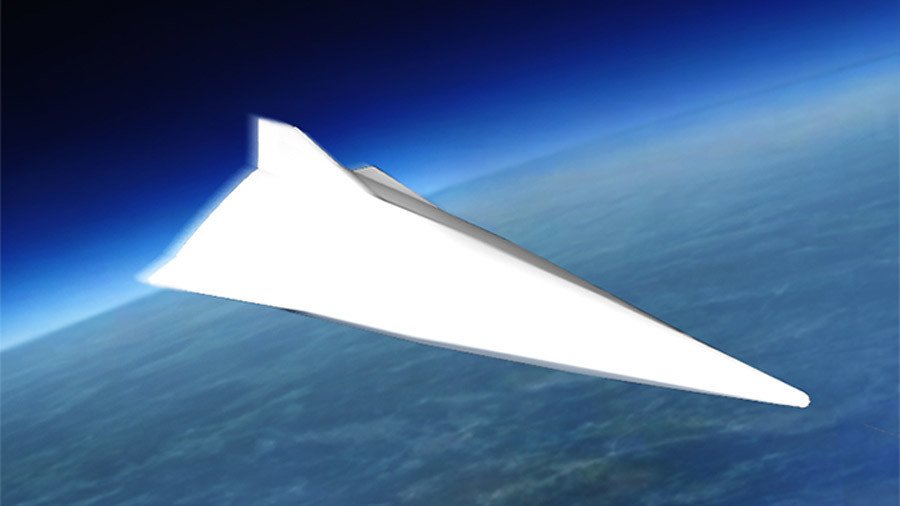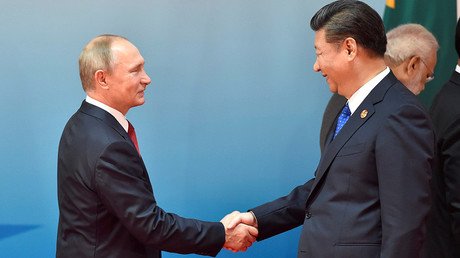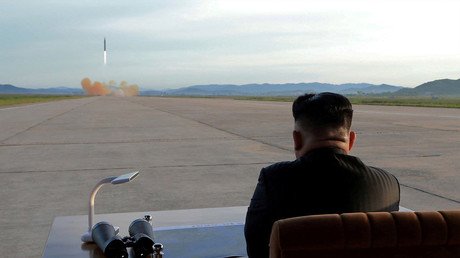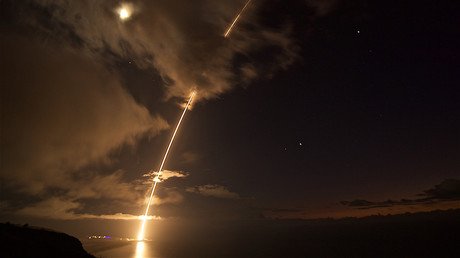China tests hypersonic glide weapon as US footprint in Asia Pacific grows

The Chinese military has successfully flight-tested a new ballistic missile-launched hypersonic glide vehicle (HGV), a menacing weapon that presents an unmistakable response to Washington’s growing military footprint in Asia.
The People’s Liberation Army Rocket Force (PLARF) in November conducted two separate test flights of the DF-17 ballistic missile with hypersonic glide vehicles, a US government source told The Diplomat on the condition of anonymity.
According to the US official, this was “the first HGV test in the world using a system intended to be fielded operationally.”
So what exactly is a hypersonic glide vehicle, and why is China, along with the United States and Russia, scrambling to develop these powerful technologies?
HGVs differ from conventional ballistic missile systems in several significant ways. According to Popular Mechanics, “HGVs travel under the gaze of traditional ballistic missile radars, flying lower than existing ballistic missile defense radars typically scan. This makes them difficult to defend against—at least for now.”
For a possible clue as to why China is actively pursuing these devastating weapons, look to the unprecedented buildup of US naval power in and around Asia and the South China Sea.
Obama’s Asia Pivot
The chronology regarding China’s development of hypersonic glide technology tells us a lot about the geopolitical situation both in the world and in Asia.
China’s military carried out the first test flight of its hypersonic glide vehicle on January 9, 2014, which was then dubbed the WU-14 by the Pentagon.
The date is significant because it falls right around the midpoint of Barack Obama’s second presidential term, a period when Washington was placing heavy emphasis on the so-called “Pivot to Asia” that in many ways came to define Obama’s legacy. Yet far from building “diplomatic bridges” with China, Beijing saw America’s newfound interest in Asia as more of a security threat than anything else.
“By putting Asia at the center of its security strategy, the Obama administration inadvertently made the entire enterprise seem to Beijing like an effort to contain China militarily," wrote John Ford in the January 2017 issue of The Diplomat. “This led China to respond by becoming more aggressive, helping to undo the general tranquility that existed before 2008.”
Early in Obama’s presidency, the US military began drawing back its forces from the Middle East and redeploying them for a potential showdown with China, the rising giant on the block. The plan called for the US to take advantage of the regional standoff emerging at the time between China and other countries – including Vietnam, Taiwan, Malaysia and the Philippines – over several clusters of islands in the South China Sea.
In March 2010, a Chinese official declared the expanse a “core interest” of Chinese sovereignty. The same declaration was made less than a year earlier in a formal letter to the United Nations. The Obama administration, however, responded by saying that freedom of maritime navigation is a US “national interest.”
Today, relations between Washington and Beijing remain at a crossroads under the Trump administration, with the Republican maverick torn between teaching North Korea a lesson and coming to terms with China’s startling rise.
Although there are certainly differences between the Obama and Trump administrations, little seems to have changed when it comes to the United States imposing its will in the Pacific. And with North Korea as a convenient excuse, Washington is able to engage in a military buildup of the region.
'Iron curtain' of missile defenses
Perhaps the most worrying development for China, not to mention Russia, is the deployment of the THAAD (Terminal High-Altitude Area Defense), which has been described as the most advanced missile interceptor in the world, in South Korea.
Beijing has strongly protested the system (as have many South Korean residents), arguing that THAAD's radar can be used to monitor the movements of its military. In any case, its deployment will further destabilize the region, as shown by China’s rapid development of the DF-17 HSVs.
In latest developments, the US announced it would deploy Aegis Ashore land-based missile defense systems in Japan as another line of defense against, yes, North Korea – the pariah state that lets America expand its power in Asia practically at will.
This has not only provoked a strong reaction from China, but Russia as well. Russian Foreign Ministry spokeswoman Maria Zakharova said such actions “will negatively influence the general atmosphere in bilateral relations, including negotiations on a peace treaty.”
In the meantime, we can expect much more development of hypersonic weapon systems as the US enthusiasm for ringing the region in an iron curtain of missile defense systems continues at a breakneck pace.

















